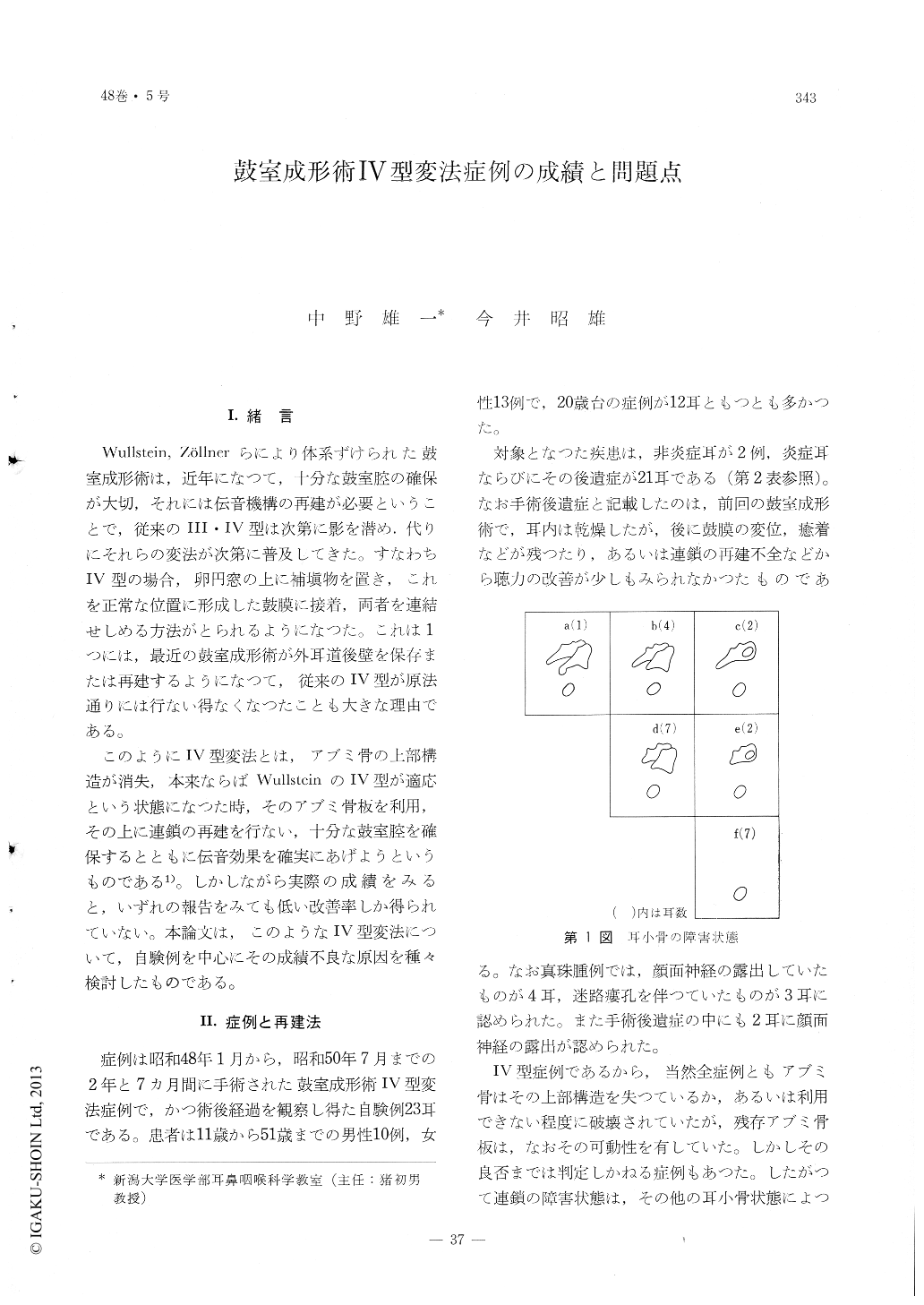Japanese
English
- 有料閲覧
- Abstract 文献概要
- 1ページ目 Look Inside
I.緒言
Wullstein,Zöllnerらにより体系ずけられた鼓室成形術は,近年になつて,十分な鼓室腔の確保が大切,それには伝音機構の再建が必要ということで,従来のIII・IV型は次第に影を潜め.代りにそれらの変法が次第に普及してきた。すなわちIV型の場合,卵円窓の上に補填物を置き,これを正常な位置に形成した鼓膜に接着,両者を連結せしめる方法がとられるようになつた。これは1つには,最近の鼓室成形術が外耳道後壁を保存または再建するようになつて,従来のIV型が原法通りには行ない得なくなつたことも大きな理由である。
このようにIV型変法とは,アブミ骨の上部構造が消失,本来ならばWullsteinのIV型が適応という状態になつた時,そのアブミ骨板を利用,その上に連鎖の再建を行ない,十分な鼓室腔を確保するとともに伝音効果を確実にあげようというものである1)。しかしながら実際の成績をみると,いずれの報告をみても低い改善率しか得られていない。本論文は,このようなIV型変法について,自験例を中心にその成績不良な原因を種々検討したものである。
Twenty three cases of ossicular reconstruction in tympanoplasty with absent stapes crura are reported with their functional results. Of these cases 26% have been capable of bringing the air-bone gap within 15 dB or better and 25% were brought into the range of 30 dB or better. However, these results are rather poor when they are compared to the results in cases of ossicular reconstruction with the stapes intact, previously reported by the authors.
The reason for this phenomena was, it was pointed out, that on the average there are less ossicular tissues with tympanic membrane defect and also less middle ear mucosa in cases of type IV tympanoplasty. In other words, the disease is more widespread in affect when the stapedial arch is missing than when it is present.
In order to obtain optimum hearing results, a staged tympanoplasty should be recommended in cases of badly diseased ears with absence of ossicular tissues. Ossicular reconstruction should be deferred until the time when healed tympanic cleft with a functional tympanic membrane may be obtained.

Copyright © 1976, Igaku-Shoin Ltd. All rights reserved.


